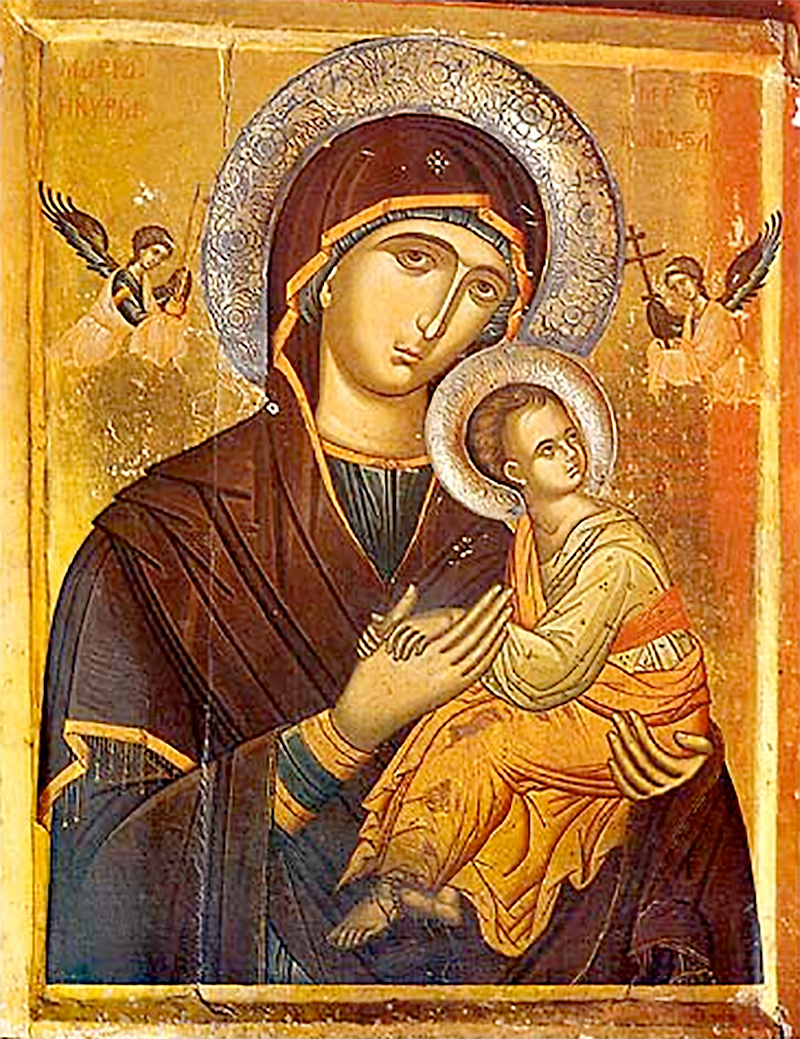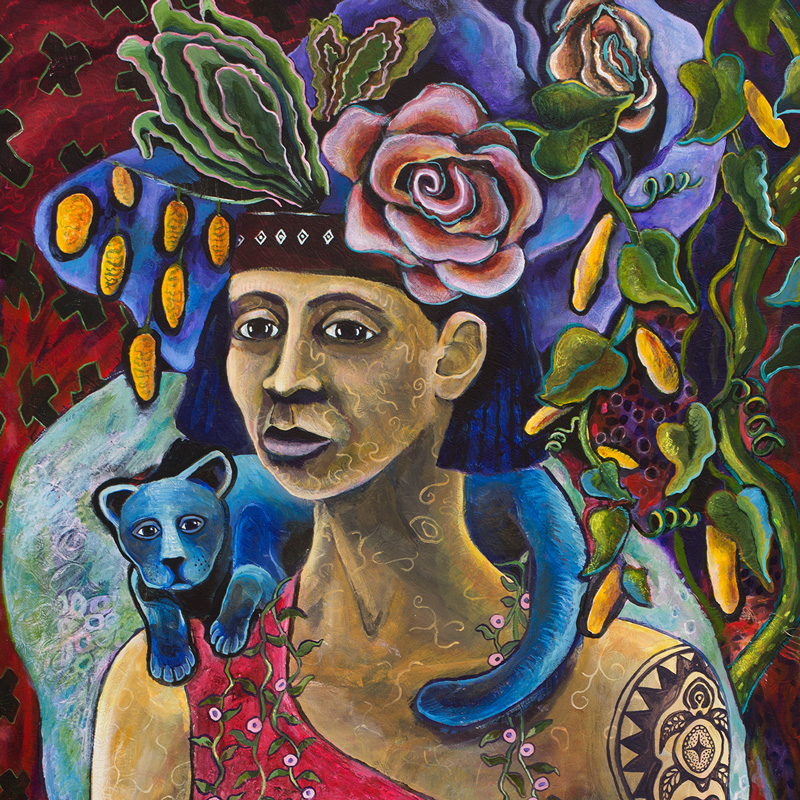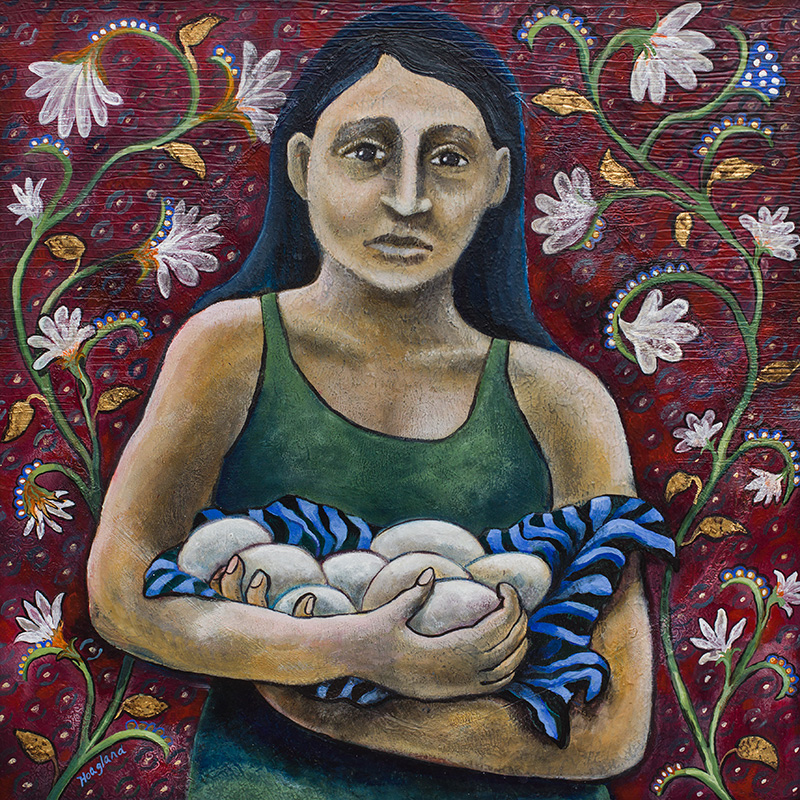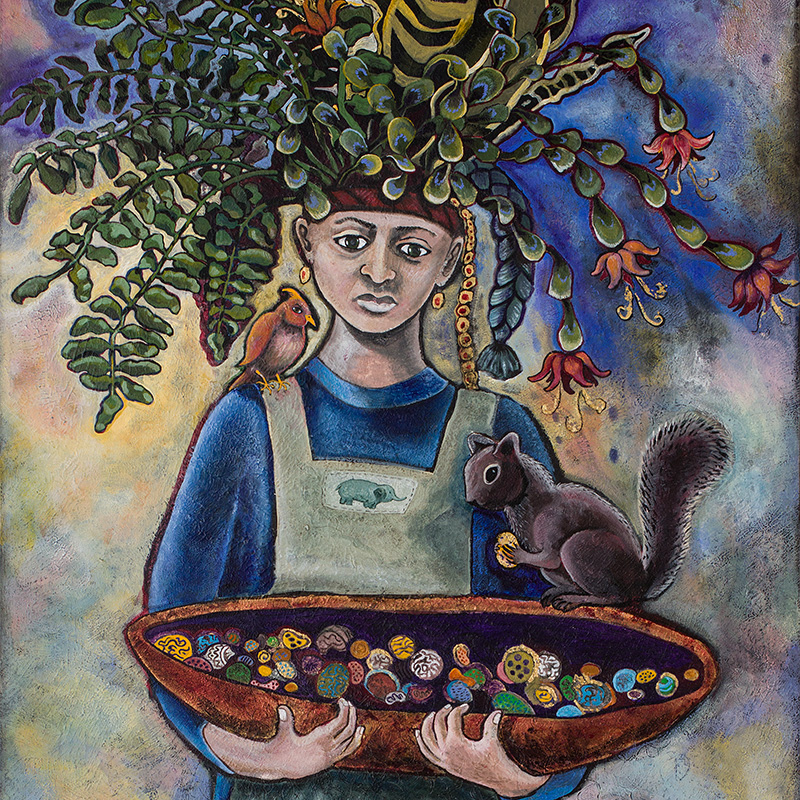
Our Mother of Perpetual Help, Icon of Madonna, 16th century
An Eco-Spiritual Madonna for Our Times
In the last two years, I have noticed that simple scenes of women intertwined with plants, animals or other earthly symbols are appearing in my work more frequently. I now understand this new work to be a series of visual meditations, work that helps us contemplate manifestations of the Divine Feminine. These portraits all feature women caring for members of other species and together suggest a way of life that is less anthropocentric, a life that is concerned with the welfare of non-human life and therefore a life that is more ecologically sustainable.
When I was close to completing the painting Our Lady of New Beginnings, a portrait depicting a woman carrying eggs to safety, I realized that the image was in essence a Madonna-figure—a madonna embodying concern for new life beyond the bounds of her own species. As I developed the life-size figure in Offering I realized that her gaze and stance urged the viewer to take action and plant seeds. Somehow these two paintings reminded me of the simple portraits of early icons that helped shift an entire worldview.
As long ago as 300 AD early Byzantine icons portrayed simple images of Christ, the Virgin Mary and the Saints. They were not painted to be admired as artwork nor were they viewed as simple portraits. To their creators and their viewers, those long-ago icons embodied the very presence of the Divine. In that day, to contemplate the subjects of an icon was to enter into a Divine presence. In contrast, from our modern point of view, we see the first icons as artwork that ushered in some of the first paintings featuring symbolic portraiture.
Icons have inspired me in two ways. Stylistically, I have adapted some of the aesthetics of folk art techniques used in original icons which were simple portraits painted on board and adorned with gold leaf. Art materials have changed over the millennia, and the modern fabulist portraits in the “Imaginary Portraits” exhibit are done on board with acrylic paints, metallic leaf, and using a simplified, 2-dimensional look as opposed to life-like representation.
Symbolically, I have adapted simple portraits to serve as a touchstone to encourage deeper understanding of the world through an eco-spiritual lens. The great challenges of our times require a shift to a culture that is relational and sustainable, a shift that repositions the roles of humans, plants and animals, and that, most importantly, places humans within natural systems rather than above them. Those challenges require us to redefine our purpose as citizens of the world—transforming ourselves from thoughtless consumers of its resources to thoughtful stewards of its natural generativity. To this end, I offer portraits of women intertwined with plants and animals as scenes for contemplation.

Woman with Wolf Cub

Our Lady of New Beginnings

Offering